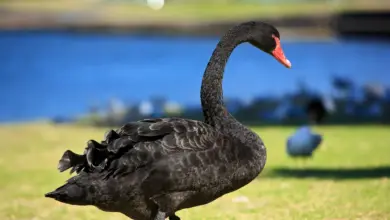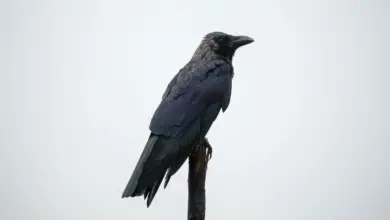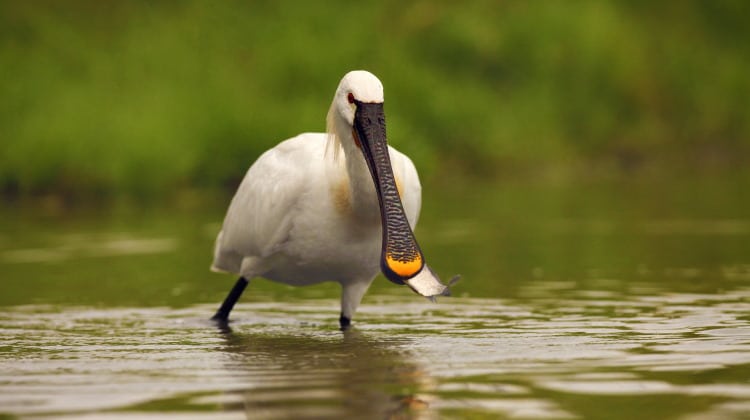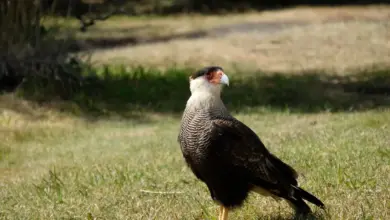What Should I Feed My Pet Parrot?
What Should I Feed My Pet Parrot? In this article, I look at the basics of feeding pet parrots.
There are as many opinions about food for our pet birds as there are people who raise them.
Compounding this is the fact that there are so many different types of birds, be it budgies, cockatiels, cockatoos, macaws, African grays, and so many others.
Knowing the constituents of a healthy diet for your parrot is extremely important because it is a crucial factor in its ultimate development and training.
In this article, I will try to clarify several points regarding this.

Understanding Your Parrot’s Ability To Eat
Parrots have certain key attributes that help them get their food when they are in the wild.
These include:
- A strong, curved beak (also known as a hookbill),
- Strong legs (though not as strong as predator birds),
- Zygodactyl feet
The last one is a technical term that means birds that have four toes, two of which face forward and two of which face backward, that, like the opposing thumbs of humans, enable them to hold on to things like food and toys.
Starting Off: First Few Weeks
When you get your bird, for the first few weeks, the best advice is to simply feed whatever your breeder tells you to.
Even if the bird is fully weaned and can eat on its own, you should heed the breeder’s advice on diet.
This is why buying a bird from a pet store is different from buying directly from the breeder.
Most store employees are not trained to teach you how best to feed and train your bird.
I always encourage first-time avian pet owners to get birds that are fully weaned.
If that’s not the case, you will quickly have to become an expert at hand feeding or syringe feeding, which is not an easy task.
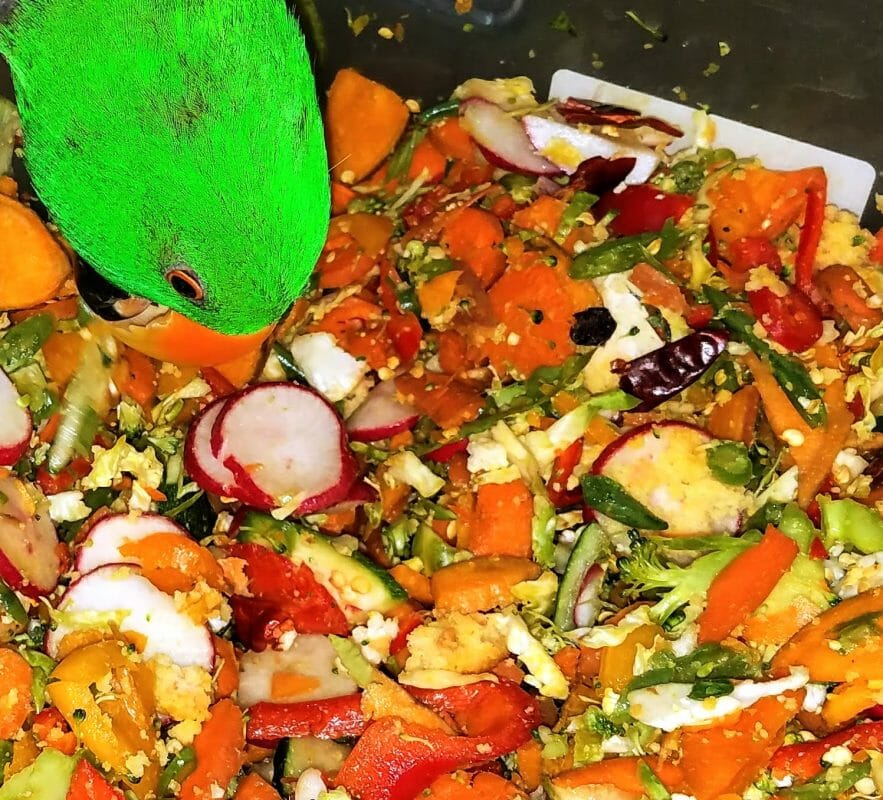
Changing Your Bird’s Diet
After the first few weeks are over and the bird gets into a natural rhythm, it might be time to change its diet or introduce new elements.
Changing your bird’s diet, whether you get one as a baby or rehome an older bird, can be a daunting process
Birds, like humans, are reluctant to change.
However, your persistence will win out in the end: Don’t give in when changing a diet and introducing new things.
Your bird will not starve itself to death. When she becomes hungry enough, she will eat what’s available!
Lastly, except for vegetables, everything else you feed your bird should be done with this keyword in mind: moderation, moderation, moderation!
Fresh vegetables should make up the bulk of a bird’s diet, along with fruit, sprouts, commercial seed blends, and pellets for specific species, as well as raw tree nuts.
Introducing Veggies
The hardest thing people say they have to feed parrots is vegetables.
The problem can usually be solved by finding a way to present them that makes a bird want to eat them.
Larger parrots, like macaws, tend to like bigger, crisper chunks, while smaller birds prefer small, mushy pieces.
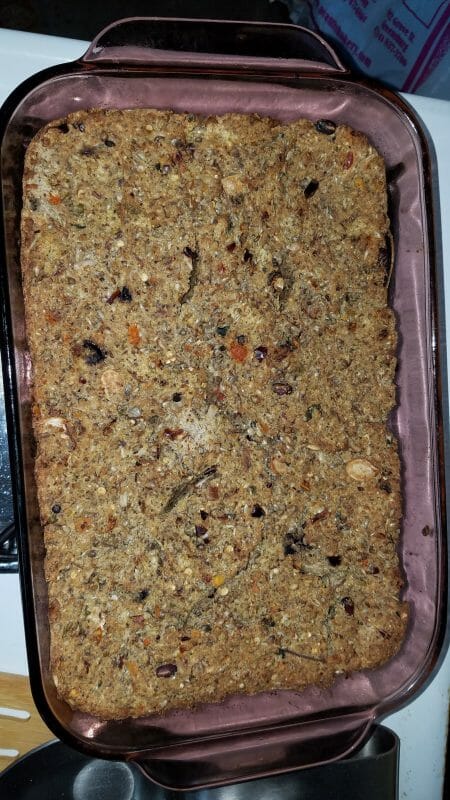
Which Vegetables To Feed?
The best vegetables to introduce to your bird are dark green and yellow ones, which contain a lot of vitamin A.
These include carrots, yams, squash, Brussels sprouts, kale, parsley, cilantro, sweet potatoes, and others.
Make sure not to feed birds onions, garlic, and other alliums because these can be poisonous to them.
How Many Vegetables Should You Feed Your Parrot?
Overall, 60 to 70 percent of your bird’s daily diet should be veggies, including sprouts if you can.
About one teaspoon for a smaller bird, two tablespoons for mid-sized ones, or three for even larger ones.
Having a variety of vegetables in the food bowl is always better. They can pick and choose what they want.
You may find that sometimes your bird will throw out the carrots and the next day the celery, but ultimately it will eat what it needs.
Adding Veggies To Your Parrots Diet: Dos and Don’ts
Softening vegetables by cooking them isn’t always a good idea. This is because cooking breaks down some of the best nutrients in fresh vegetables.
Sometimes making a batch and freezing it in small quantities is a better bet for better nutrition.
Another great tool for getting your bird to eat veggies is adding a sprinkle of spices to them every day.
Most of the common spices in your cupboard will work. You can even use some specialty seeds like sesame or aniseed to give the veggies a different look, smell, and taste for your bird to enjoy.
Again, keep moderation in mind when adding spices: a sprinkle is all you need.
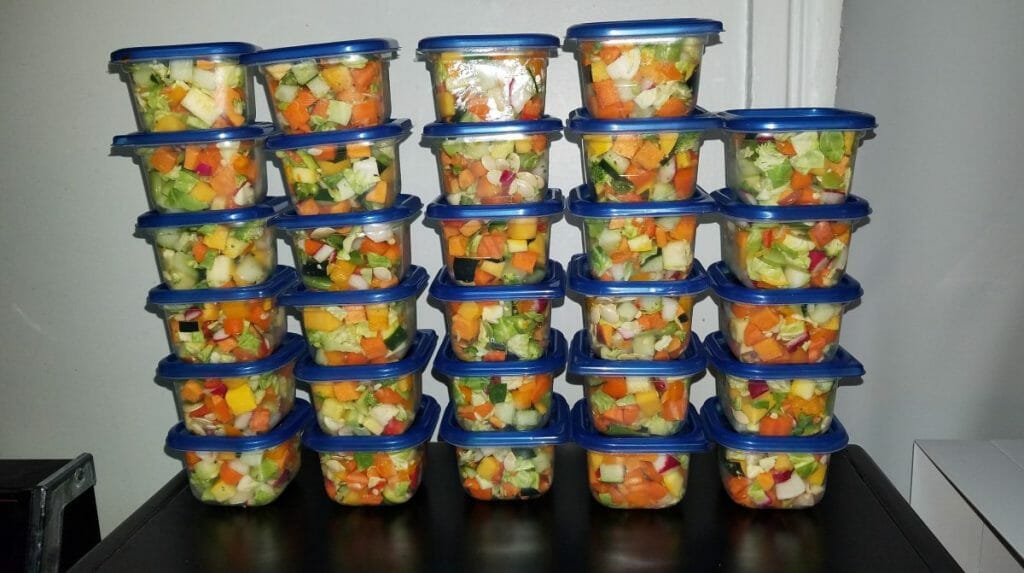
Feeding Fruits
Birds tend to like nearly all fruits because they are sweet. You won’t have much difficulty introducing fruits to your bird’s diet.
Some of the most popular ones that parrots prefer include carrots, peas, beets, apples, grapes, sweet corn, bananas, papayas, oranges, and pomegranates.
Keep in mind that many fruit pits are poisonous, such as those of cherries, peaches, plums, apricots, and so on.
These need to be removed, and only the flesh of the fruit should be given to your pet. Avocados are also poisonous to most birds.
How Many Fruits To Give Your Parrot?
Most wild birds have a fruit-heavy diet. On the other hand, the percentage of fresh fruit in a captive parrot’s diet should be only about 5 to 10 percent of the total content.
In the wild, a bird needs much more glucose. Glucose gives them energy, as they need to fly a lot and almost constantly.
You must understand that no matter how much your bird flies in your home, it will never be as much as its cousins in the wild.
In captivity, too much fruit can lead to high energy which can cause behavioral issues ranging from screaming to feather destruction to biting and more.
Seeds & Pellets
Dry Seeds
25 years ago, dry seeds were the bulk of captive birds’ diets; today, they are not as common in wild bird diets, except for birds that live in desert areas.
Tropical birds eat very few seeds, or for that matter, vegetables, but mostly fruits.
Still, five to ten percent of seeds provide variety to a captive bird’s diet.
Most commercial blends also incorporate vitamins and minerals that are vital to birds.
However, some species, particularly Eclectus parrots, need their own particular seed mix, or else their health can get affected.
That’s why it is important to use seed blends specifically meant for your bird’s species.

Sprouted Seeds
On the other hand, soaked or sprouted seeds, as well as legumes like chickpeas (also known as garbanzo beans), and lentils, provide a lot of nutrition to a bird.
They can be added to the diet as part of the vegetables served every day.
You can also soak other seeds and herbs with them that don’t sprout to increase the nutritional benefit, visual appeal, and taste of your bird’s food bowl.
Pellets
There seems to be a notion among bird owners that pellets are specially formulated to meet all the bird’s dietary needs.
The science behind this comes from the manufacturers themselves and is very doubtful.
In my view, nothing compares to a fresh, wholesome diet that includes a wide variety of foods, including veggies, fruits, soaked seeds, and pellets.
The exception to this is “cold-pressed” pellets.
These are just dehydrated foods that aren’t processed and cooked into pellets.
If you use dry pellets, make sure plenty of water is available and that they are no more than five to ten percent of the bird’s daily diet.
Nuts
Raw tree nuts should make up five percent or less of a parrot’s daily diet.
These can include cashews, pecans, Brazil nuts, pistachios, walnuts, and almonds (although technically, in the United States, they must be pasteurized by heating and aren’t really raw), among others.
Nuts should always be considered a “treat,” like ice cream for a child. They should not become a regular part of your bird’s diet.
You can chop up these nuts into small bits and use them for training purposes since parrots love having nuts to practice their beak skills on.
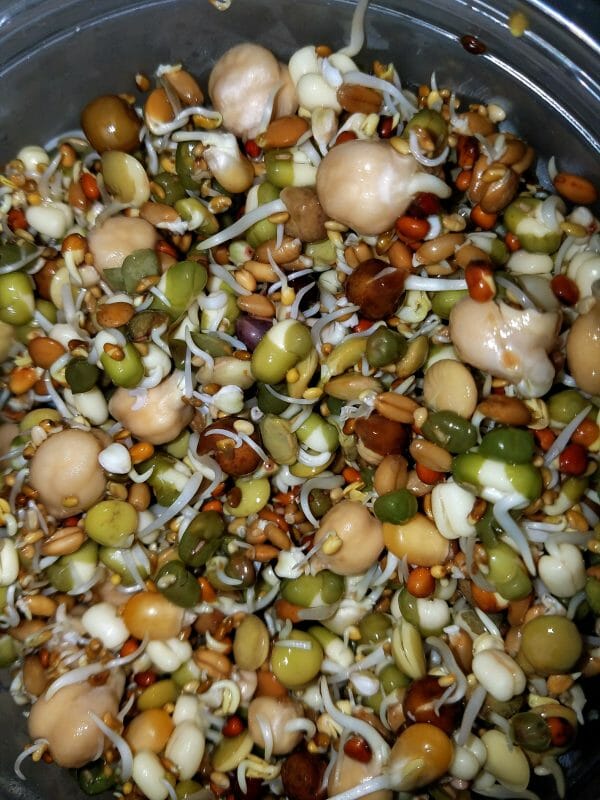
Birdie Breads
Many people also bake “birdie bread” to be used as a treat. Birdie breads are baked with non-wheat flour, such as garbanzo or other healthier choices. (Recipes to come.)
Human Foods
Wild birds eat what they need based on what is available.
One species of bird may eat completely different foods from one island to the next, depending on what is on that island.
Some can even eat foods that are poisonous but have the nutrition they need, then temper that by eating a certain mud to counteract the poison.
They learn this behavior from their parents and flock. Your bird will also learn from its flock: You.
You want to avoid feeding them human food as much as possible because birds have strong nutritional needs that are very different from humans.
A small, tiny piece of pizza crust every now and again or a taste of plain pasta won’t hurt them.
But regular diets of prepared human food can cause issues such as diabetes and obesity that will cost you thousands of dollars to treat and likely cut short your featured friend’s life.
How To Feed Your Bird
The next point for you to consider is just how you feed them.
In general, it is best to give your bird a bowl of fresh foods and fruit in the morning, mixed with some pellets if appropriate.
Then you should remove it after an hour or so and refrigerate it. Next, put it back later in the afternoon.
This serves two purposes: one, it limits how much they eat during the day. After all, you wouldn’t want a buffet open in your house 24/7, would you?
Second, it provides you with an opportunity for the bird to get hungry enough that he or she wants the treats you hand out when you are training them.
A hungry bird is a cooperative bird.
Just remember that poor feeding rituals (schedules) can lead to unwanted behaviors, including screaming.
So make a schedule and stick with it as much as you can. Your bird likes consistency in its life much the same as a child.
Both can thrive better if they have a consistent pattern.
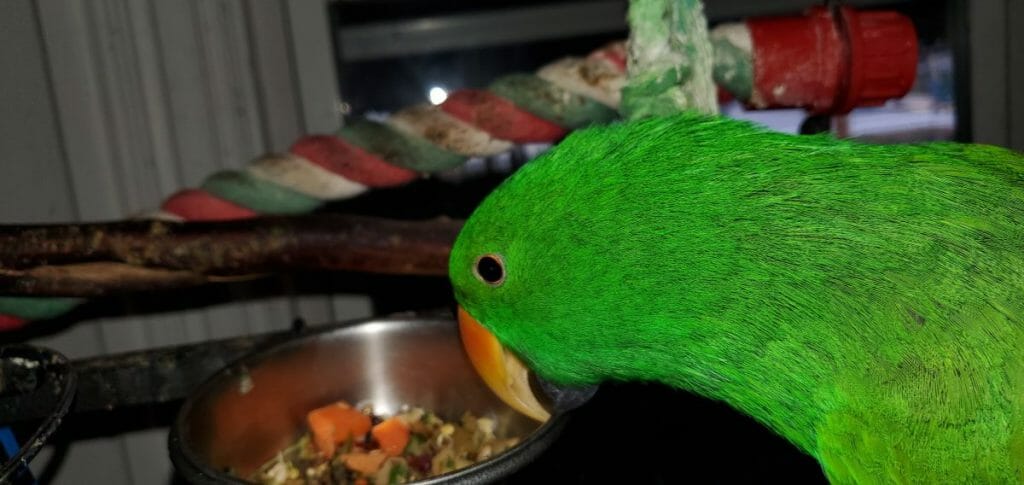
Foods That Should Not Be Given to Parrots
Remember that processed foods are designed for human consumption, not bird consumption, so they should be completely off the table.
Dairy products, candy, especially chocolate, bread, caffeine, salt, and fat are all poor choices to feed your bird.
Lastly, as mentioned earlier, some seemingly safe vegetables and fruits like avocados, tomatoes, garlic, onions, and mushrooms are no-nos too.
Regularly Weighing Your Bird
The most important thing is to constantly monitor the weight of your bird. That will give you an idea of how successful your diet and nutrition efforts have been.
The best way is to weigh your bird on a small scale, preferably one with a perch.
An alternative way is by checking your bird’s keel bone, which runs down the belly of the bird.
You should be able to just feel the bone.
A sharp “V” shape indicates an underweight bird, whereas a flabby “W” shape means an overweight bird. A perfect “U” shape is ideal.
Taking Advice
Any change in diet for your bird should be carefully considered and discussed with an avian veterinarian if possible, or at least a veterinarian who has experience with parrots.
Just remember opinions, even among experts, are widely divergent based on the doctor’s training and experience.
You should do diligent research and use your common sense and judgment before blindly following any advice.
Wrap Up
I hope I have covered all the basics regarding a pet parrot’s diet.
Of course, there are many things that you need to consider before you find the magic formula that works best for your bird.
Make sure to be consistent, and when making any change to their diet, persist with it for some time instead of immediately rejecting it if the bird doesn’t like the food.
Like I said earlier, a hungry bird will eventually eat what you give, so be persistent if you are sure that what you are offering is for the best.
Thank you for reading!

Frequently Asked Questions
What is the best food for parrots?
As mentioned earlier, vegetables are the primary source of food for your parrot. You can use several, but the most important ones are the green and yellow ones.
This would include carrots, yams, squash, Brussels sprouts, kale, parsley, cilantro, and sweet potatoes.
Add a but of sliced fruit, excluding the ones I mentioned like avocados, and after removing the pits.
Various types of nuts, seeds, and pellets can be added to the mix as well, but it would be best to soak the seeds overnight.
What is a parrot’s favorite fruit?
There are certain fruits that have pits in them, like plums and peaches. These need to be removed before giving them to your parrot.
This is because the pits have cyanide-producing compounds that can be dangerous for your bird.
Avocados are another fruit that must never be given to parrots.
Apart from that, most fruits are good for parrots. However, the key is moderation – you should not give them fruits for more than 10% of their diet.
This is because fruits have glucose, which gives your bird energy. Excess energy with nowhere to go can cause bad behavior and irritation for them.
Can parrots eat rice?
Birds in the wild eat a variety of grains, including rice. Rice contains important nutrients such as protein, iron, thiamine, niacin, and magnesium.
However, as with any food, moderation is key and grains should not account for more than 30% of a bird’s daily diet.
Mixing in other whole grains can provide well-rounded nutrition and flavor.
Is milk good for parrots?
While some birds may enjoy milk or cheese in their diet, it is important not to feed them too much dairy, as they cannot digest it properly, which can lead to diarrhea.
Cheese and yogurt have less lactose than milk, ice cream, or heavy cream, which are not recommended for birds.
Curd is one form of milk that might be given to them in moderation.


